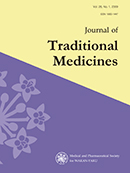Current issue
Displaying 1-6 of 6 articles from this issue
- |<
- <
- 1
- >
- >|
Regular Articles
-
2013 Volume 30 Issue 5 Pages 199-205
Published: 2013
Released on J-STAGE: April 10, 2014
Download PDF (629K) -
2013 Volume 30 Issue 5 Pages 206-214
Published: 2013
Released on J-STAGE: April 10, 2014
Download PDF (1276K) -
2013 Volume 30 Issue 5 Pages 215-220
Published: 2013
Released on J-STAGE: April 10, 2014
Download PDF (259K) -
2013 Volume 30 Issue 5 Pages 221-228
Published: 2013
Released on J-STAGE: April 10, 2014
Download PDF (630K) -
2013 Volume 30 Issue 5 Pages 229-235
Published: 2013
Released on J-STAGE: April 10, 2014
Download PDF (804K) -
2013 Volume 30 Issue 5 Pages 236-245
Published: 2013
Released on J-STAGE: April 10, 2014
Download PDF (1123K)
- |<
- <
- 1
- >
- >|
